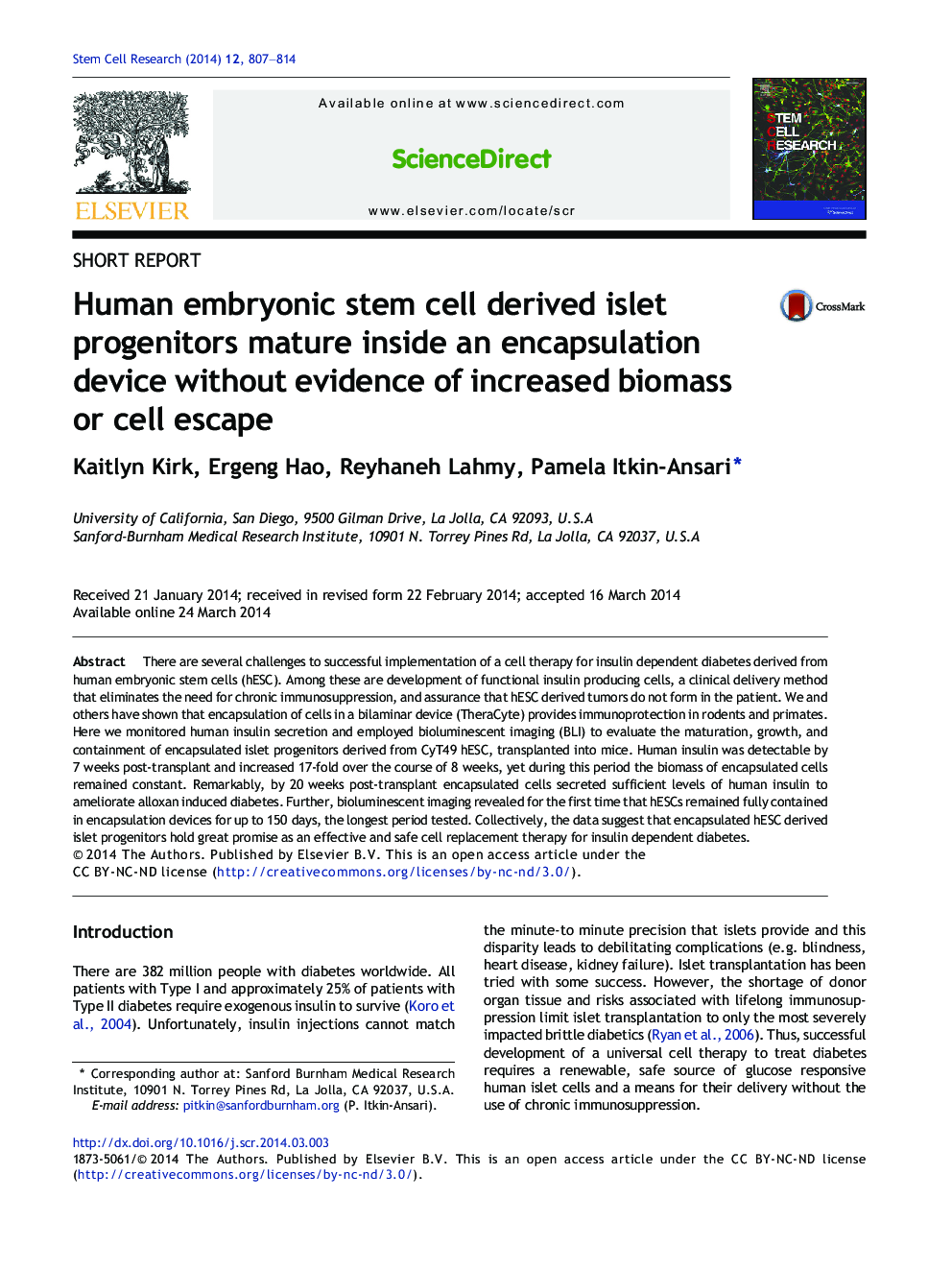| Article ID | Journal | Published Year | Pages | File Type |
|---|---|---|---|---|
| 2094542 | Stem Cell Research | 2014 | 8 Pages |
•Encapsulated CyT49 human embryonic stem cell (hESC) derived islets alleviate diabetes.•Islet maturation from hESC does not require cell growth.•hESC do not escape from the TheraCyte encapsulation device.
There are several challenges to successful implementation of a cell therapy for insulin dependent diabetes derived from human embryonic stem cells (hESC). Among these are development of functional insulin producing cells, a clinical delivery method that eliminates the need for chronic immunosuppression, and assurance that hESC derived tumors do not form in the patient. We and others have shown that encapsulation of cells in a bilaminar device (TheraCyte) provides immunoprotection in rodents and primates. Here we monitored human insulin secretion and employed bioluminescent imaging (BLI) to evaluate the maturation, growth, and containment of encapsulated islet progenitors derived from CyT49 hESC, transplanted into mice. Human insulin was detectable by 7 weeks post-transplant and increased 17-fold over the course of 8 weeks, yet during this period the biomass of encapsulated cells remained constant. Remarkably, by 20 weeks post-transplant encapsulated cells secreted sufficient levels of human insulin to ameliorate alloxan induced diabetes. Further, bioluminescent imaging revealed for the first time that hESCs remained fully contained in encapsulation devices for up to 150 days, the longest period tested. Collectively, the data suggest that encapsulated hESC derived islet progenitors hold great promise as an effective and safe cell replacement therapy for insulin dependent diabetes.
